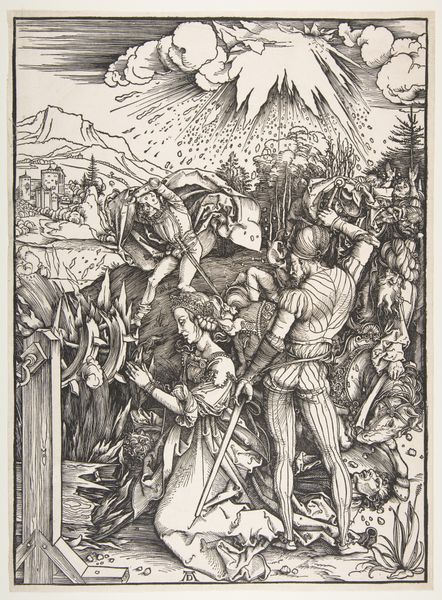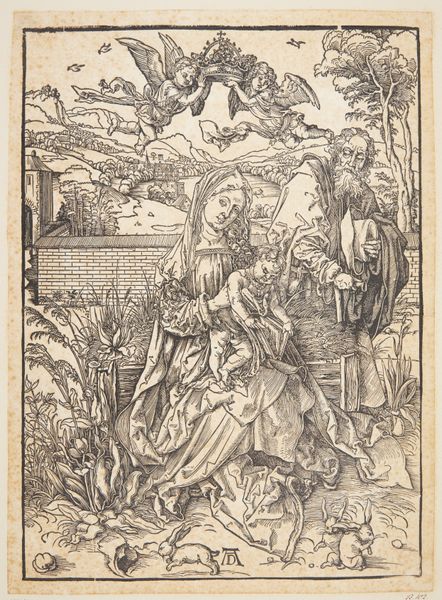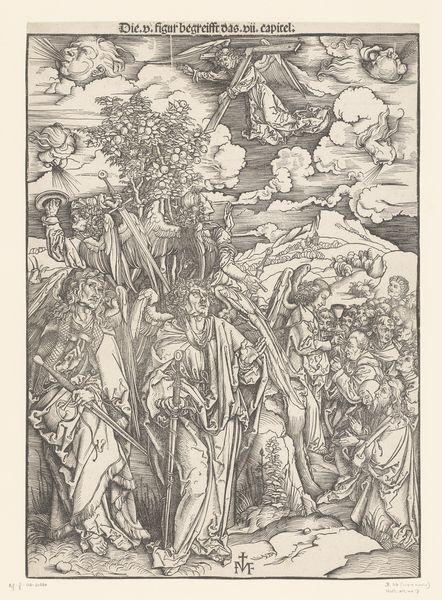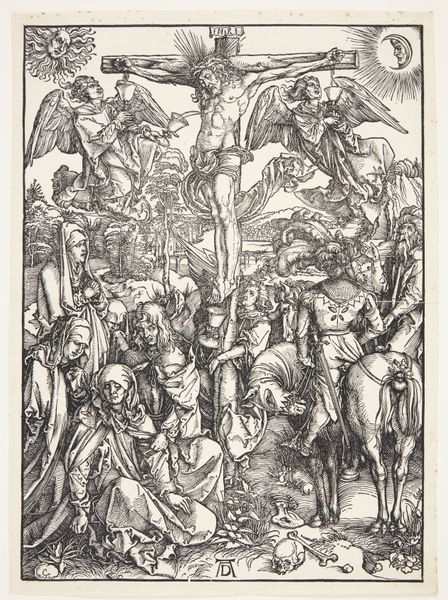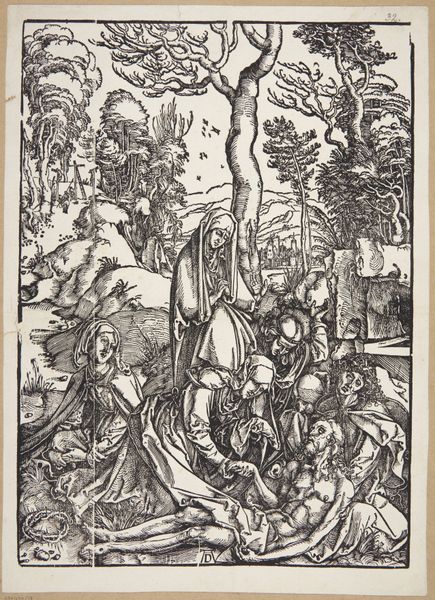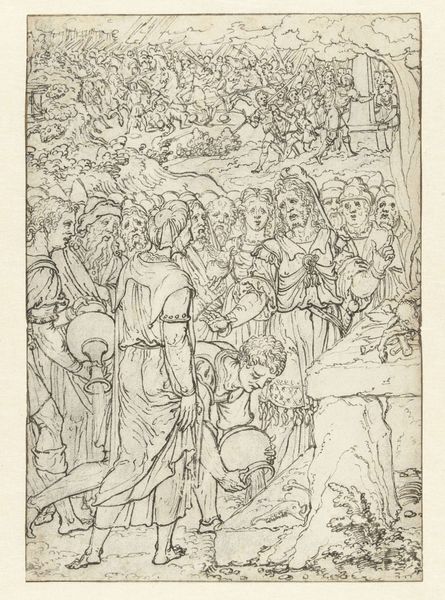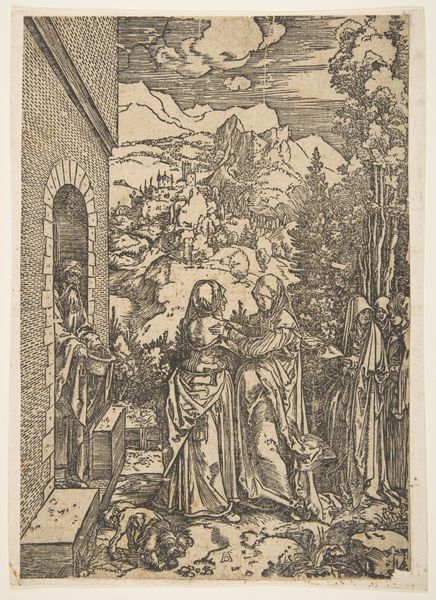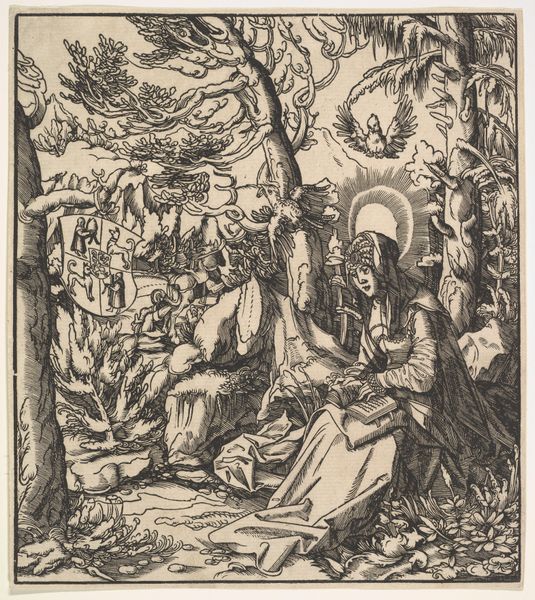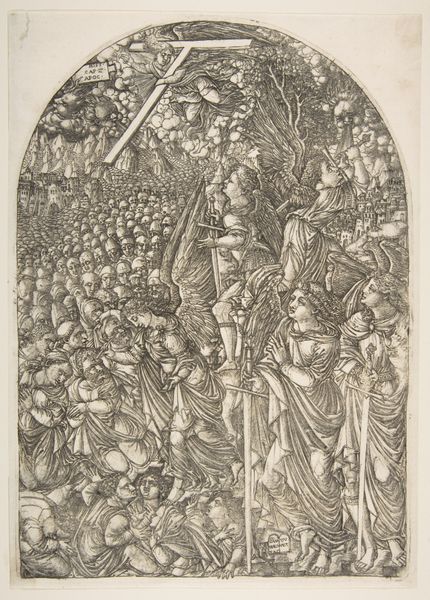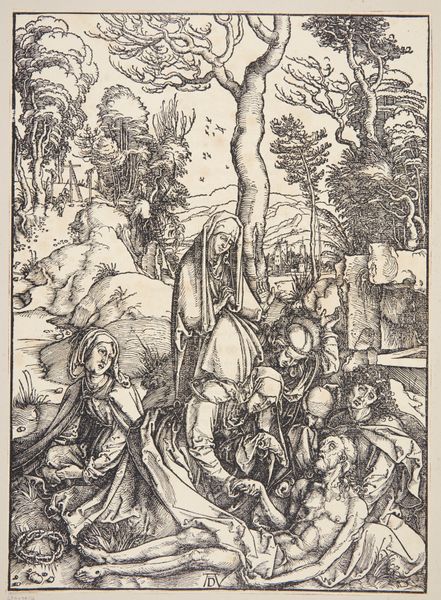
print, woodcut
# print
#
figuration
#
woodcut
#
pen work
#
history-painting
#
northern-renaissance
Dimensions: 412 mm (height) x 298 mm (width) (bladmaal)
Albrecht Dürer made this ‘Deposition of Christ’ using the labor-intensive technique of woodcut. The process starts with a block of wood, painstakingly carved to leave a raised design. This is then inked and printed, resulting in the image we see. The stark contrast of black lines on white paper gives this print its dramatic visual impact. Look closely and you can appreciate the sheer skill required to create such detail with a knife. Dürer was a master of the technique. Woodcut was a key technology in the 15th and 16th centuries, it allowed for the relatively inexpensive reproduction of images and texts. Prints like these were produced for mass consumption. Each one required labor, from forest to workshop, reflecting the intersection of artistic skill, production, and the emerging print market. Considering the materials and processes used by Dürer allows us to appreciate not only the aesthetic qualities of the artwork, but also its historical and cultural context. It challenges the conventional distinction between art and craft, showing how the two are often deeply intertwined.
Comments
No comments
Be the first to comment and join the conversation on the ultimate creative platform.

